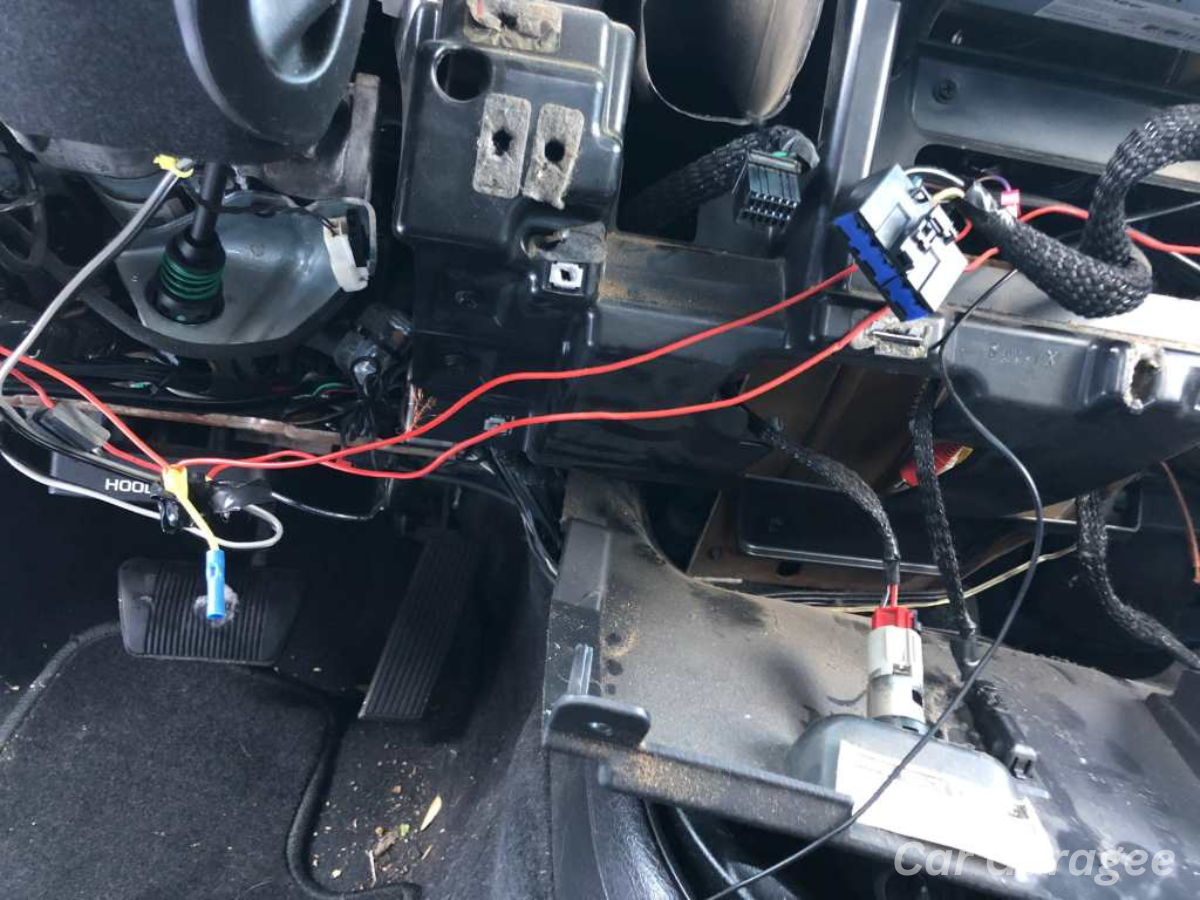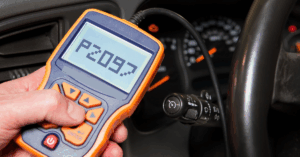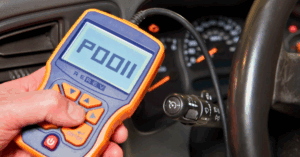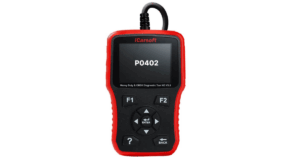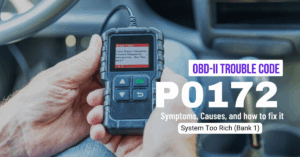When your four-wheel drive system has problems, it can significantly affect your overall driving experience. One of the most common issues arises from the transfer case control module, which is crucial for handling power distribution in your vehicle. If you start facing issues, it’s a good idea to be cautious and consider resetting the module. This might sound challenging, but it’s a manageable task for most car owners.
First, you’ll want to disconnect the car’s battery to prevent any power-related problems while working on the module. Leave it disconnected for 15 to 20 minutes to ensure a full reset. After that, reconnecting the battery and turning on the engine is straightforward. Once the vehicle runs, you can drive it for a few miles to let the system recalibrate. Depending on your car model, the module may need some time for reprogramming, but this simple process can help escape more severe issues.
If the module isn’t maintained correctly or the reset doesn’t work, you might find the resetting procedure ineffective, which could mean further intervention is needed. But overall, performing this reset alone can save you time and get you back on the road quickly.
What Is A Transfer Case Control Module?
The Transfer Case Control Module (TCCM) is an essential component in the four-wheel-drive system of many vehicles, especially those from General Motors. This electronically operated module plays a key role in the operation of your 4WD by processing shift requests and executing them accurately. It controls the system’s shift functions, ensuring that each shift is requested, completed, and verified correctly.
Typically, the TCCM is located on the driver’s side, often near the dashboard or steering column, making it easy for the driver to access if needed. The connector module connectors are within reach, allowing quick access if maintenance or troubleshooting is required. Understanding its location and functionality helps drivers manage their 4WD system more efficiently and ensures smoother operation when facing challenging terrain.
What Does The Transfer Case Control Module Do?
The TCCM plays a crucial role in controlling the shifting of your 4WD system. This module processes real-time data from the vehicle to determine the appropriate shift speed and whether a change in the transfer case mode is needed. When a shift is requested, the TCCM completes it by activating the transfer case encoder motor. It will also trigger the front differential locking actuator if necessary to make the shift possible.
In some cases, the selector switch might flash for up to 30 seconds if the shift is not completed or there is an issue. This flashing signals to the driver that the system is working to process the request. Understanding this sequence helps drivers ensure smooth and accurate shifts in their 4WD system.
Methods to Reset the Transfer Case Control Module
Here are some simple methods you can use to reset the transfer case control module on your vehicle.
Method 1: Resetting the TCCM Using the Vehicle’s Battery
The first method to reset the TCCM involves using your car’s battery. Begin by disconnecting the battery to break the electrical connection to the vehicle temporarily. Once the connection is broken, wait 15 to 20 minutes to ensure the system fully powers down. After the wait, proceed by reconnecting the battery. Once reconnected, start the car’s engine and take the vehicle for a short drive. This process should successfully reset the transfer case control module and restore regular operation in your vehicle.
Method 2: Resetting the TCCM Using Diagnostic Tools
For a more precise reset, you can use diagnostic tools to assess the issue and determine if the vehicle’s TCCM is functioning correctly. Consult your owner’s manual for guidance on using these tools with your car. If you need more clarification about the process, it might be best to seek professional help to avoid any potential complications. This method ensures that the TCCM reset is done thoroughly and efficiently, helping to resolve any underlying issues with the system.
Method 3: Resetting the TCCM via the Ignition Key Sequence
Another approach to resetting the transfer case control module is through a specific ignition key sequence. This method varies depending on the vehicle, so it’s essential to look in your vehicle’s manual to find the exact steps. Following the correct key sequence can reset the module without additional tools. If unsure, you can watch a video about your car model to help guide you. This is a quick and efficient way to reset the TCCM without disconnecting the battery or using diagnostic tools.
Method 4: Resetting the TCCM Using the Onboard Computer System
Some vehicles have an onboard computer system that allows for easy resets. To reset the transfer case control module using this method, navigate the vehicle’s menu options on the dashboard controls. You may need to scroll through the settings until you find the option to reset the TCCM. Once located, simply press the relevant buttons to complete the reset. This method makes it possible to reset the TCCM without disconnecting the battery or using external tools, and it can often be done quickly through the vehicle’s on-screen prompts.
Why Reset the Transfer Case Control Module?
You would want to reset your vehicle’s transfer case control module for numerous reasons. Here I have listed some of these reasons for you.
-
Incorrect Sensor Readings
A problematic TCCM can lead to incorrect sensor readings, which may start affecting your car’s functioning. Resetting the TCCM can correct these sensor readings, helping you avoid any errors and ensuring your car works as intended.
-
System Calibration
Resetting the TCCM is essential for calibrating the car’s transfer case system. It ensures proper communication between the module and the car’s system, allowing everything to function smoothly and accurately.
-
Updates
If your car’s system has recently been updated, resetting the TCCM can help integrate the update properly, ensuring its full functionality and compatibility.
-
Regular Maintenance
Regular maintenance on your car every few weeks, including resetting the TCCM, is crucial for keeping the system in check. This will help clear any diagnostic codes and keep the vehicle running smoothly.
How Do I Know If My Transfer Case Control Module Is Bad?
Several signs indicate that your car’s transfer case control module may have gone wrong. You might experience difficulty shifting gears, hear unusual noises, or notice the inability to engage gears properly. Sometimes, you could encounter unwanted shifts or see dashboard warning lights related to the transmission. These issues can indicate potential transmission problems and point to your car’s faulty transfer case control module.
Transfer Case Control Module Symptoms: Top 5 To Notice
Sure, signs will be noticeable when the transfer case is acting up. A flashing warning message or a Driver Information Center (DIC) warning light can signal a problem. If these lights appear without any apparent problem, it’s worth checking the module.
The 4×4 System Stops Working.
When you try engaging the 4×4 system by pushing the button on the switch panel, and it feels dead, you might start wondering if it will cost a lot to fix. Before worrying about a significant expense, it’s worth learning how to test the 4×4 control module to see if the issue exists. You can perform a TCCM self-test to determine if you need to change the module.
Start by turning the ignition switch to the “on” position and observing the transfer case shift control switch. Watch if the indicators show the current gear or if they flash, signaling that the TCCM is working. If the indicators don’t flash, you should check for the battery’s positive and ignition voltage and ensure the ground circuit is functioning. This involves checking the connector to the transfer case shift control switch and the ground circuit to the TCCM.
If the TCCM fails the self-test but all the circuits are acceptable, it’s likely time to replace the transfer case control module.
The Service 4WD Message
It’s normal to see the “Service 4WD” message appear occasionally; sometimes, it goes away when you shut off the vehicle and turn it back on. However, if it persists after a few restarts, the bad TCCM might be the reason, though it could also be due to a faulty encoder motor or a malfunctioning button pack.
Engine Hesitates After Taking Off
There are tons of components that can cause engine problems, but the TCCM can also be responsible. If you experience transfer case control module symptoms like hesitation while driving—such as a 1999 Jimmy that hangs back before fully kicking off—it could be because the TCCM sends the wrong signals to the transmission. In such cases, changing the component may solve the problem.
Unusual Grinding, Humming, or Growling Noises
If you hear strange sounds from your automobile, it could be an early indicator of a problem. Unnatural noises are not just annoyances; they often point to a more significant problem under the hood. The TCCM could be behind these sounds, such as growling, buzzing, or a grinding sound that changes with the car’s speed. These noises might result from a mechanical defect, like a faulty bearing, loose chain, broken gears, or even a low fluid level in the transfer case.
Puddle Formation in the Transfer Case
If you notice a greasy puddle under your automobile, it could indicate a leak in the transfer case. A potential culprit might be a faulty transfer case control module (TCCM). To investigate, raise the car on jacks and perform a visual check for leaks. If the TCCM is defective, a leak could be visible at the back of the transaxle unit or near the transmission.
These leaks often start slow, making them easy to miss until you notice a significant puddle. If the TCCM is causing the transfer case to run short on oil, it can lead to the destruction of internal components. Both automatic transmissions and transfer cases rely on an oil pump, while manual transmissions depend on proper oil levels to avoid damage.
FAQS
How Do I know If my Transfer Case Control Module Is Bad?
When your transfer case control module starts to fail, you’ll notice the 4WD system acting differently. A common sign is the service 4WD warning light that suddenly activates. This light might stay on even after you’ve disengaged the drive, indicating a deeper problem. If your vehicle lacks a dedicated warning light, you may observe that it usually keeps the 4WD light on. Once the issue is addressed and you fix the part, the light should turn off. However, if the module continues to act up, the system may not disengage properly, preventing your car from smoothly switching from drive to other modes.
How to Reset Control Module?
If you’re facing issues with your control module, one of the quickest fixes is removing the ECM fuse. To do this, first ensure the vehicle is completely off to avoid any electrical mishaps. Next, locate the fuse box, usually found under the dashboard or in the engine bay, and open the cover. Using the fuse diagram, find the ECM fuse and carefully remove it. After removing the fuse, wait for 10-15 minutes to let the system reset properly. Once the time has passed, reinsert the ECM fuse back into its original location, and don’t forget to close the fuse box securely. Finally, start the vehicle and see if the issue is resolved.
How to Reset BCM Module?
To reset the body control module, follow these steps carefully. First, mark down your presets like radio stations or seat settings, as these might be lost during the process. Then, remove the battery cables, ensuring both are detached. After that, touch the cables together to discharge any remaining electricity in the system. If your vehicle is equipped with a specific fuse, make sure to remove the fuse as well. Next, proceed to connect the battery cables back securely. Once everything is reconnected, retest the condition to see if the module is functioning properly again.
Can a Control Module be Repaired?
Yes, a control module can often be repaired. If there’s an issue with the module, it may not always need full replacement, which can be expensive. Many companies offer services to repair control modules, such as AES, providing an effective solution for much less cost. Repairing the module is a practical option that can restore its function without disrupting the whole process of your vehicle’s system.
Can I Reset my ECU myself?
Yes, you can reset your ECU yourself. The process is simple and involves detaching the battery or resetting the fuse from the fuse box in your automobile. Both options are available, and the procedure is generally risk-free and uncomplicated. It does not take much time, making it a quick and easy solution if you need to reset your vehicle’s system.
Does a Transfer Case Control Module Need to be Programmed?
When replacing a transfer case control module (TCCM), in most cases, it should work right out of the box. There is usually no extra procedure needed as the TCCM often comes pre-programmed. So, if you’re just replacing the module, it should start functioning without the need for any additional steps. This makes the process straightforward and hassle-free, allowing your vehicle to resume normal operation quickly.

Mian Hashir is a passionate automotive enthusiast and the lead author at Car Garagee, a website dedicated to providing in-depth car reviews, maintenance tips, and the latest news in the automotive world. With years of experience in the industry, Hashir combines his technical knowledge with a love for cars to deliver insightful and engaging content. Whether you’re a car owner or a curious reader, Mian Hashir’s articles help readers make informed decisions, from choosing the right vehicle to understanding how to keep it in top condition.

